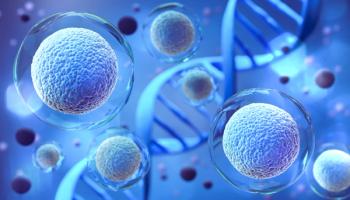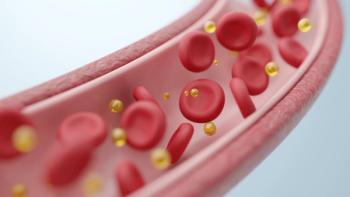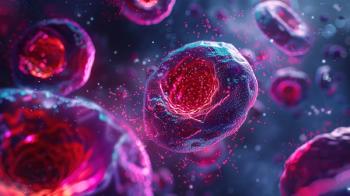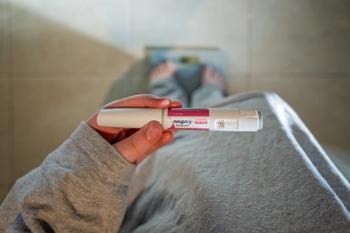
Study Finds Biomarkers That May Be Associated Hepatocellular Carcinoma Risk
The authors note that the biomarkers found in the blood were involved in inflammatory processes, immune functions, or vascular processes, and may be pre-diagnostic indicators.
According to study authors, early detection might be able to transform treatment and outcomes in cancer care, and notably liver cancer. Liver cancer, or hepatocellular carcinoma (HCC), is often diagnosed in a late stage and has limited options for a cure. Additionally, the methods of early detection are lacking, with limited accuracy and sensitivity in existing methods. These methods are also often expensive, invasive, or limited in their accessibility and are mostly available in major hospitals. The study evaluated proteins that are detectable in blood, which can improve predictions about the risk of liver cancer up to years before the usual diagnosis.1
“Liver cancer rates are rapidly increasing and liver cancer has a high mortality rate, but if we can diagnose it early, therapeutic interventions can be potentially curative,” said lead author Xinyuan (Cindy) Zhang, PhD, Channing Division of Network Medicine at Brigham and Women’s Hospital, in a news release. “We need to have a way to detect this form of cancer early enough to intervene with surgery or liver transplantation to treat the disease before it becomes metastatic.”1
For this case-control study—using data and blood samples from the Nurses’ Health Study (NHS) and the Health Professionals Follow-up Study (HPFS)—the authors measured 1305 pre-diagnostic SOMAscan proteins from 54 pairs of individuals who were considered “healthy” and then developed HCC, who were matched with non-HCC controls. The SOMAscan allows the investigators to detect small levels of circulating proteins that may be present in early stages of HCC, simultaneously measuring 1305 proteins in the blood. The study included 34 HCC cases from the NHS and 20 from the HPFS.2
The authors noted that correlations between SOMAscan and ELISA results were calculated, and areas under the receiver operation characteristic curve of models were compared, using only the traditional risk factors (eg, age, sex, smoking status, alcohol intake, among others); using only the selected proteins; and combining the Basic + Protein model. Additionally, the authors stratified the cases based on the time since blood collection, dichotomized by 10 years, to explore the pattern of associations over time. Further, covariates with potential associations with HCC that were collected included smoking status and alcohol intake, body mass index (BMI), leisure time and physical activity, history of diabetes, and aspirin use.2
“It’s always been challenging to identify highly specific disease biomarkers in the blood using traditional tools, but this new technology allows us to detect a broad and dynamic range of both high and low abundant proteins,” said co-senior author Towia A. Libermann, PhD, of the Division of Interdisciplinary Medicine and Biotechnology, Beth Israel Deaconess Medical Center, in the press release.1
According to the analysis, baseline characteristics of the 54 pairs of HCC cases and their matched controls in the NHS and HPFS, the mean time since blood collection was 12.7 (6.1) years. Additionally, the evaluated covariates were comparable between cases and controls in both cohorts; however, HCC cases were more likely to have a higher BMI (P = .007) and diabetes n = 8) compared to controls (P = .11 and n = 3, respectively).2
According to the SOMAscan analysis, 121 of 1305 proteins had significantly different expression levels in the pre-diagnostic plasma of healthy individuals who were subsequently diagnosed with HCC compared with their healthy counterparts without HCC. Additionally, of these 121 differentially expressed proteins, 56 proteins were elevated in the HCC group compared with the non-HCC group. The SOMAscan demonstrated degrees of difference in the levels for 8 representative and statistically significant pre-diagnostic biomarkers, of which 4 (CHI3L1, GDF15, IL1RN, and SELE) are involved in inflammatory processes and other immune functions or in vascular processes, according to the authors.2
“New insights into the biological mechanisms underlying liver cancer development emerge from our data that may lead to identification of novel therapeutic targets. Most importantly, we were able to validate these early detection biomarkers using alternative protein analysis techniques and in an independent population cohort from the UK,” said Libermann in the press release.1
The authors note that although case numbers are small due to the low incidence of HCC, the findings are consistent with results across different datasets, populations, and assay modalities. However, this is the first study that provides evidence to the observed signals from the 4 proteins.2
“Even though further investigation in additional populations is absolutely needed, our results reveal a robust circulating protein profile associated with liver cancer years before diagnosis, which is remarkable,” said co-senior author Xuehong Zhang, MBBS, ScD, who conducted work on this study while at the Channing Division of Network Medicine at the Brigham. Zhang is now at Yale.1
References
1. Mass General Brigham— Brigham and Women’s Hospital. Researchers Identify Biomarkers in Blood to Predict Liver Cancer. News release. April 30, 2024. Accessed May 10, 2024. https://www.massgeneralbrigham.org/en/about/newsroom/press-releases/researchers-identify-biomarkers-in-blood-to-predict-liver-cancer#:~:text=From%20the%20blood%20samples%2C%20the,control%20individuals%20without%20hepatocellular%20cancer .
2. Zhang X, Zhao L, Ngo LH, et al. Pre-diagnostic plasma proteomics profile for hepatocellular carcinoma. J Natl Cancer Inst. doi:10.1093/jnci/djae079
Newsletter
Stay informed on drug updates, treatment guidelines, and pharmacy practice trends—subscribe to Pharmacy Times for weekly clinical insights.

















































































































































































































